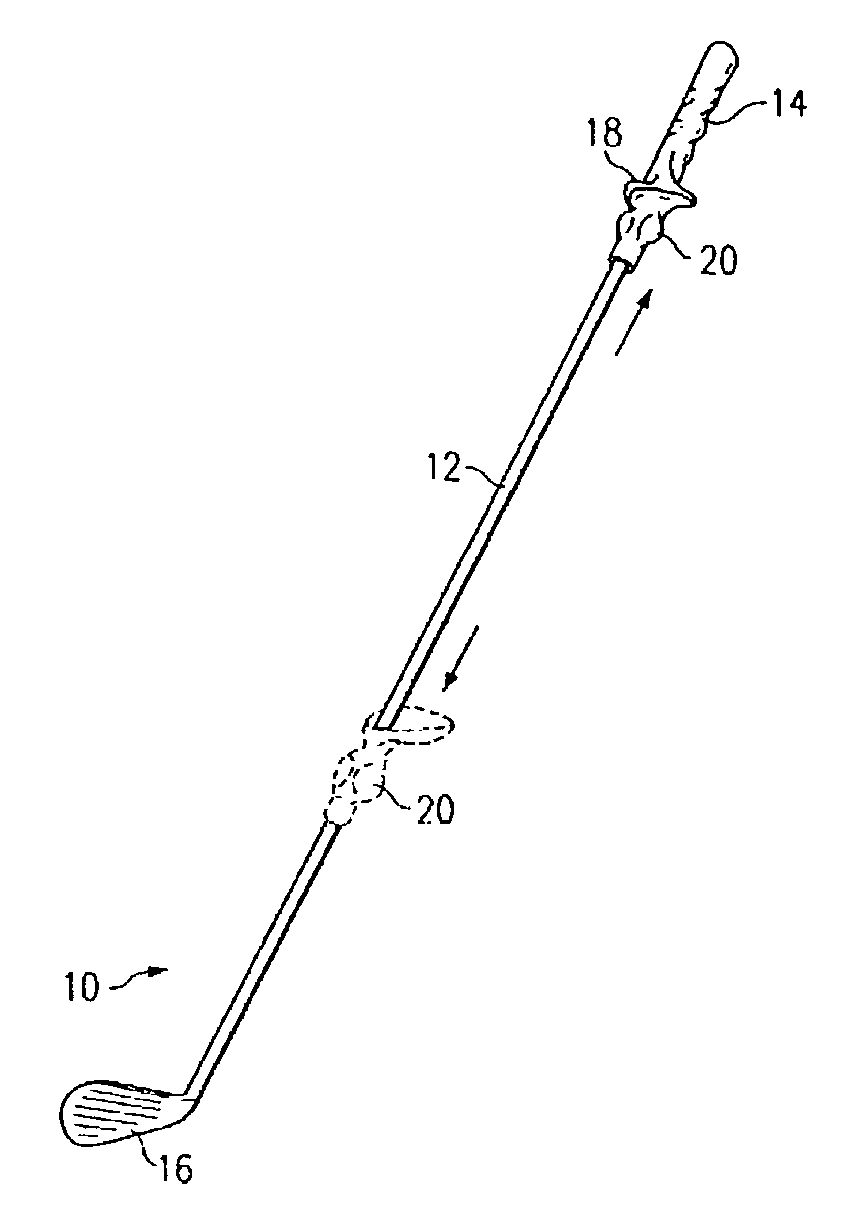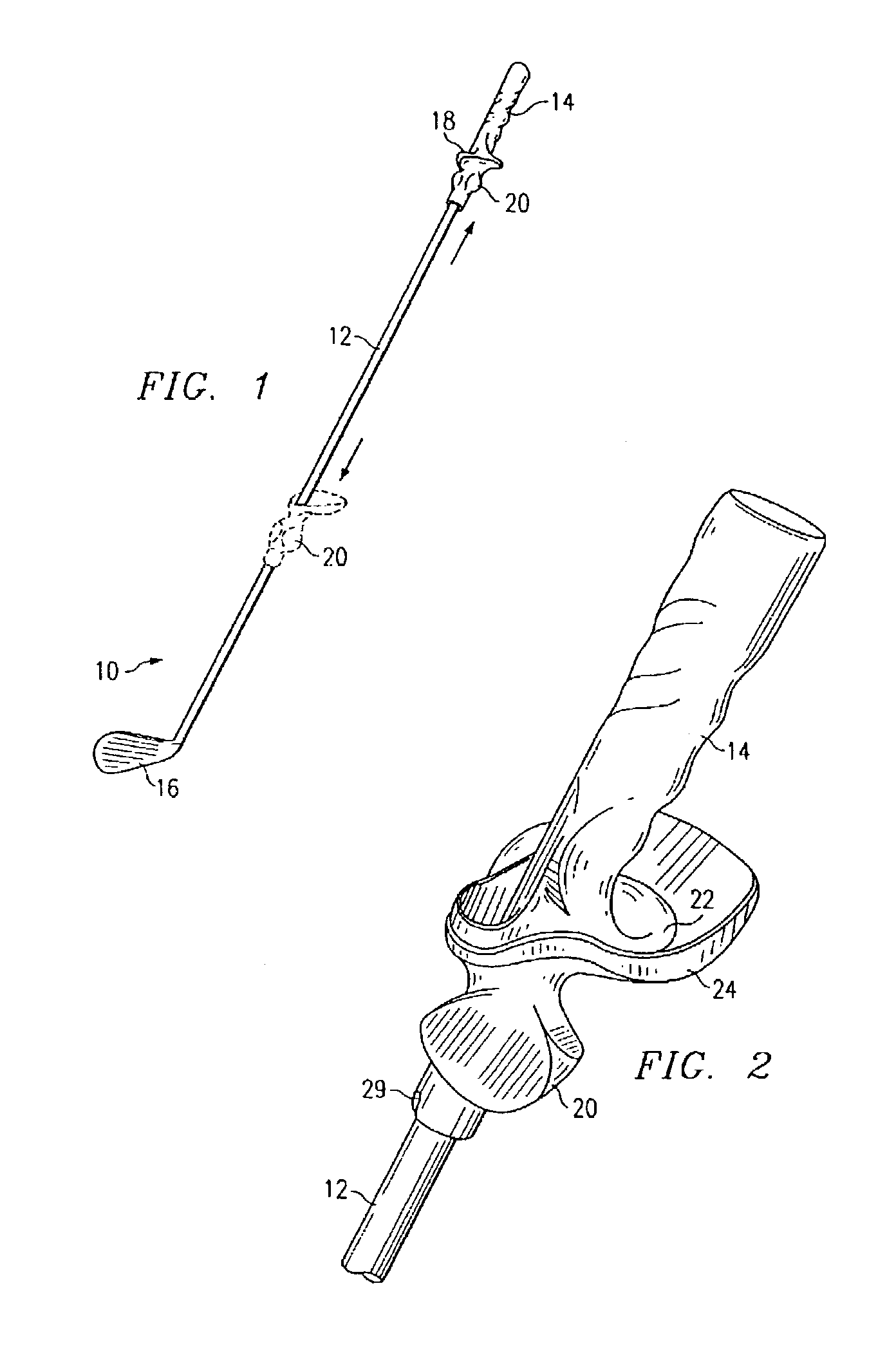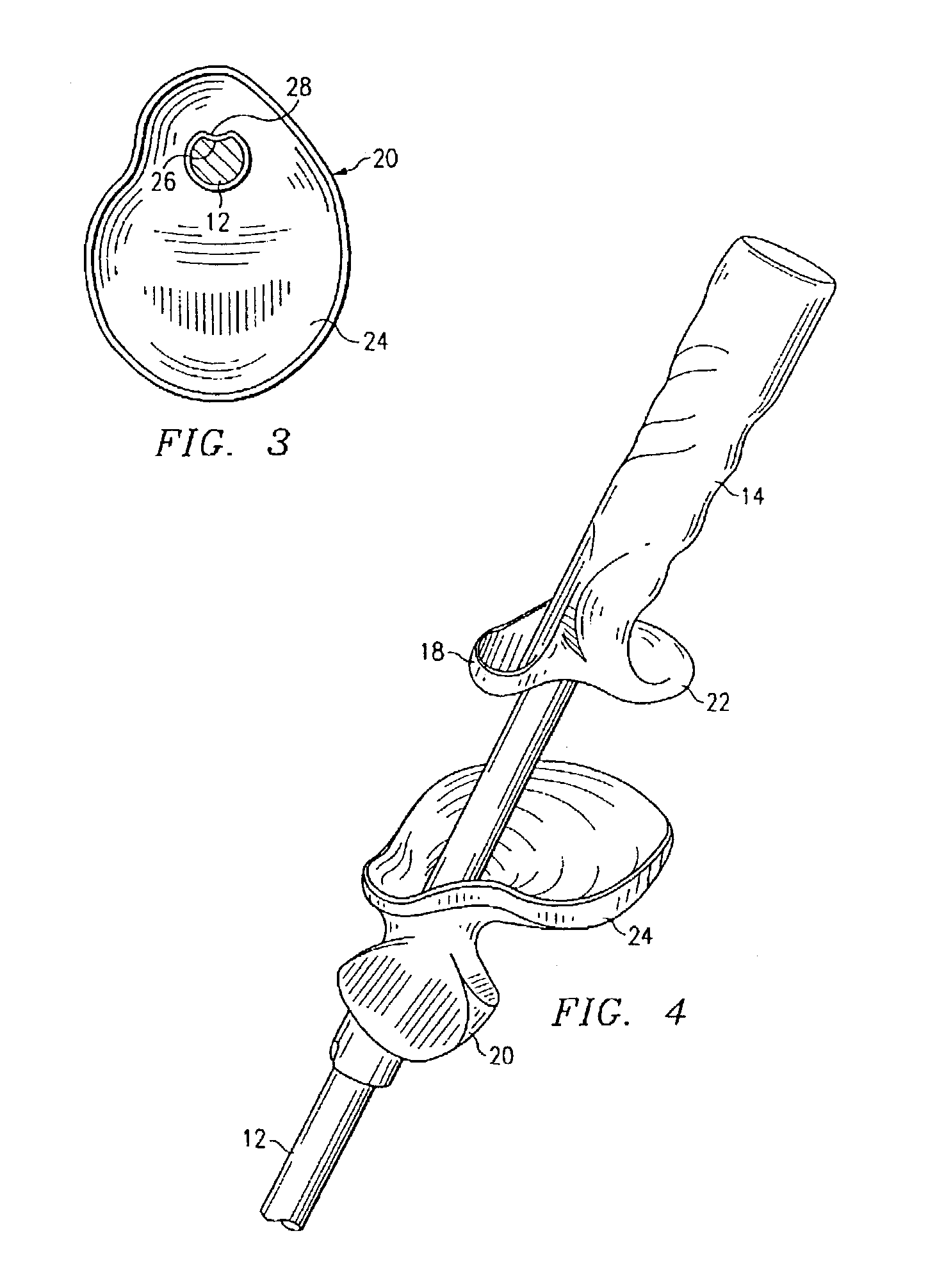Golf swing training device and training method
- Summary
- Abstract
- Description
- Claims
- Application Information
AI Technical Summary
Benefits of technology
Problems solved by technology
Method used
Image
Examples
Embodiment Construction
[0036]A preferred embodiment of the invention is illustrated in FIG. 1 and comprises a modified golf club 10. The golf club has an elongated shaft 12 with a handle 14 at one end and a conventional head 16 at the other end. Alternatively, the conventional head 16 can be replaced by a weight or other nonconventional termination. The golf club 10 shown is a right-handed golf club, but it will be appreciated that the invention applies equally to a left-handed golf club, for which appropriate modifications can be made as will become apparent from the following description. The handle 14 is fixed to the end of the golf club 10 and preferably includes a grip having contoured surface conforming, and correctly positioning and aligning, to the thumb and forefinger of the user's left hand. Additional contoured surfaces can be added to conform to additional fingers of the left hand. The grip 18 and handle 14 are preferably integrally formed as a molded unit using an suitable material or combina...
PUM
 Login to View More
Login to View More Abstract
Description
Claims
Application Information
 Login to View More
Login to View More - R&D
- Intellectual Property
- Life Sciences
- Materials
- Tech Scout
- Unparalleled Data Quality
- Higher Quality Content
- 60% Fewer Hallucinations
Browse by: Latest US Patents, China's latest patents, Technical Efficacy Thesaurus, Application Domain, Technology Topic, Popular Technical Reports.
© 2025 PatSnap. All rights reserved.Legal|Privacy policy|Modern Slavery Act Transparency Statement|Sitemap|About US| Contact US: help@patsnap.com



